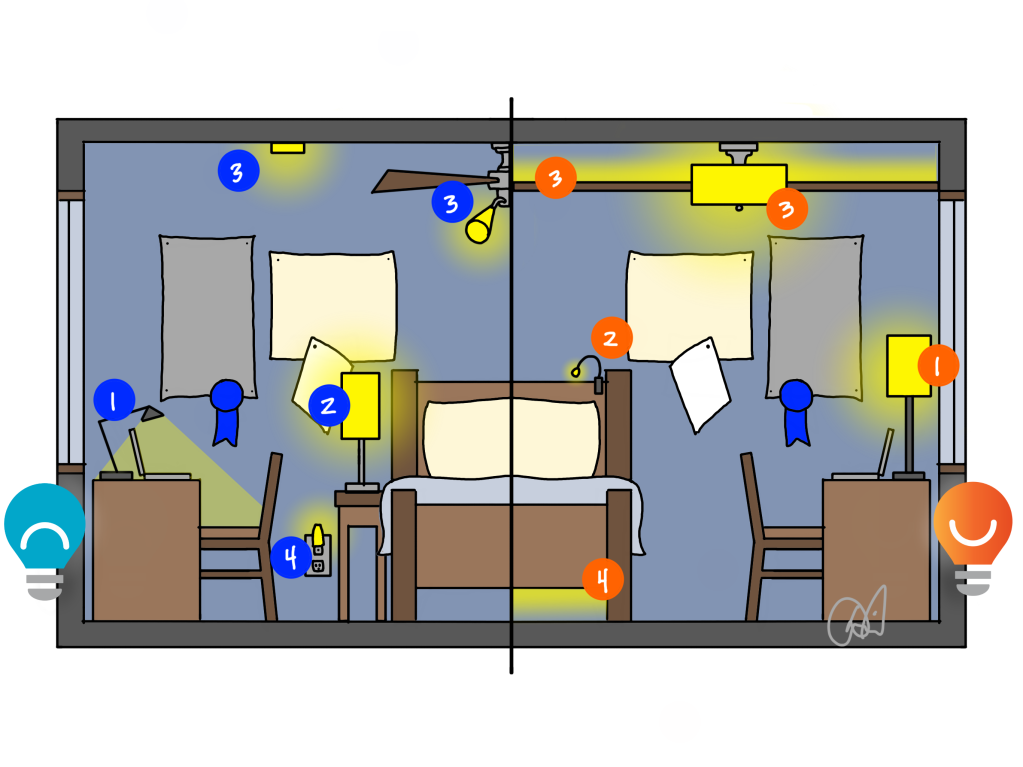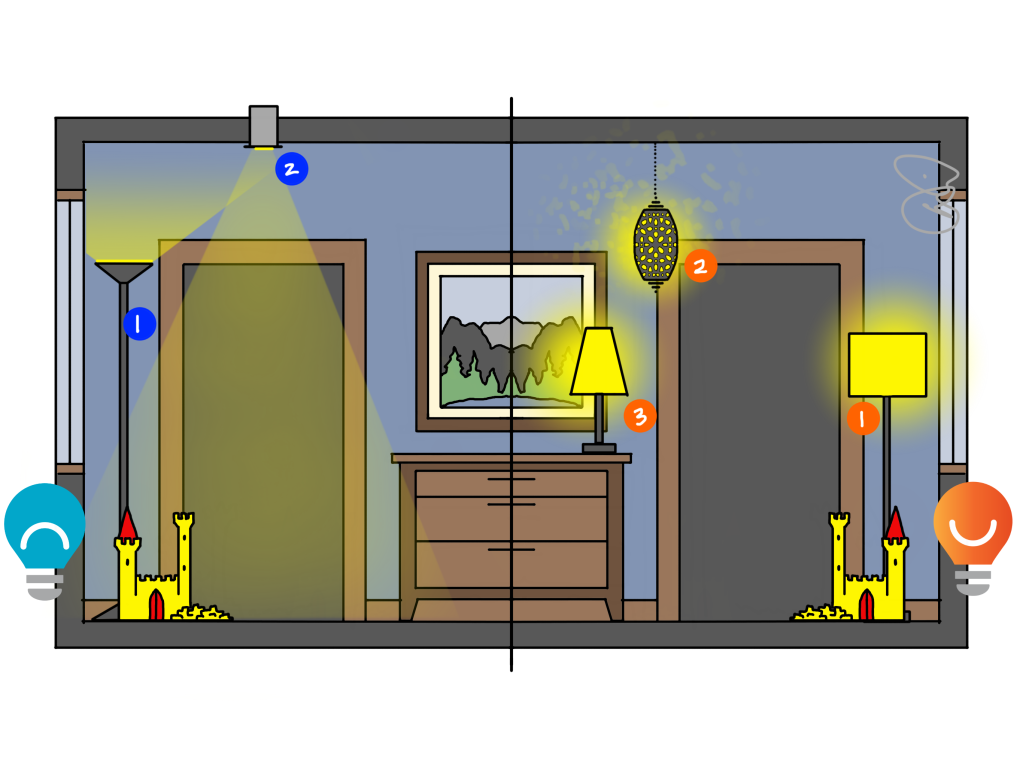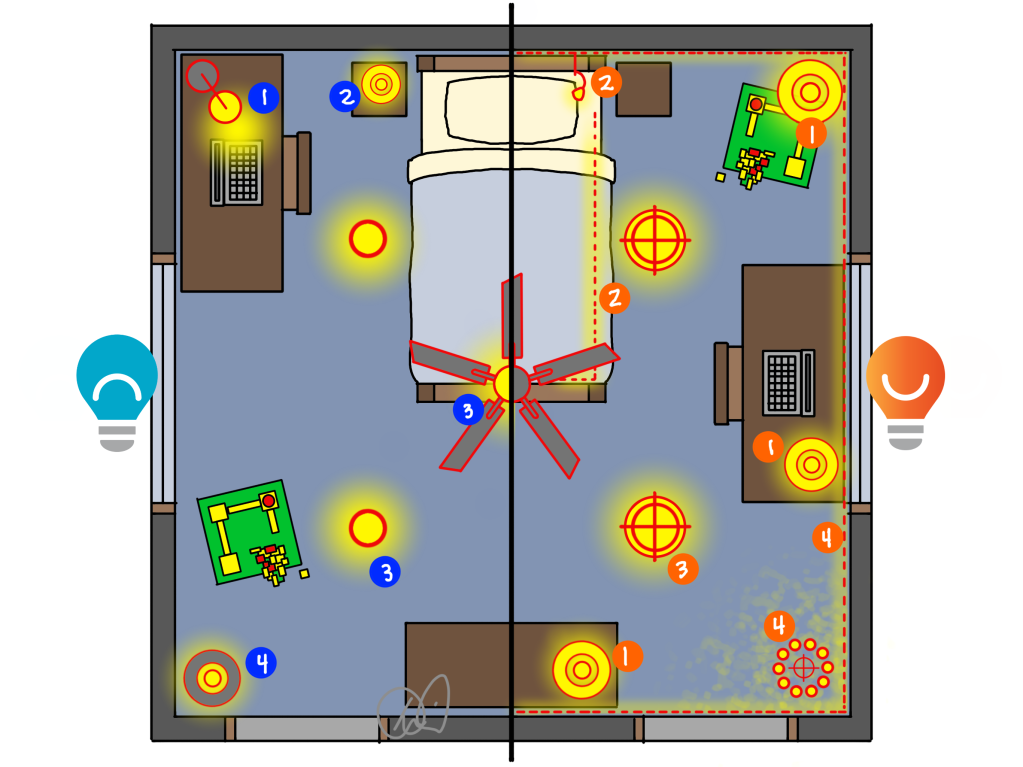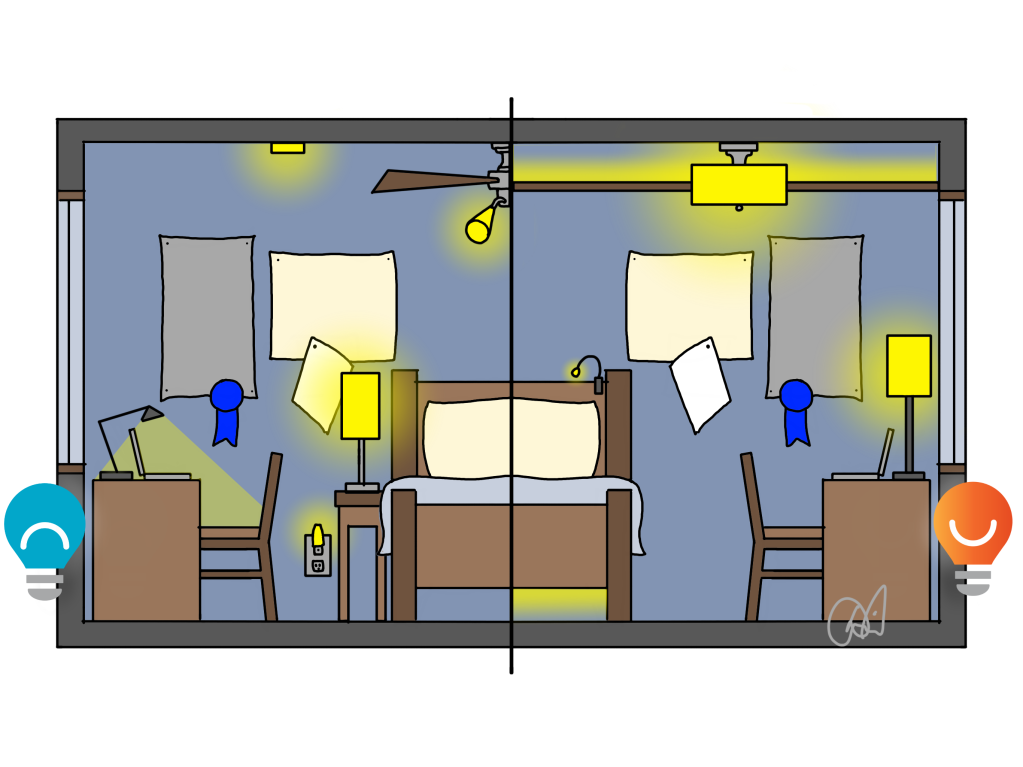My wife and I use our bedroom for sleeping, getting dressed in the morning, and a few other things I won’t mention. Our children, over the course of the past twenty-plus years, have used their bedrooms for sleeping, dressing, and nearly every other activity imaginable.
At different times in their lives, our children have read books, built LEGO, played with stuffed animals, put on plays, hosted a mini science fair, played dress up, built train layouts, collected rocks and minerals, built a prayer altar, watched movies, hung out with friends, and had their diapers changed. There have been cribs, beds, bunk beds, loft beds, dressers, chairs, a reading nook, desks, LEGO tables, bookshelves, and more bookshelves. There have been Star Wars themes, Marvel posters, birding guides, nature photography displays, liturgical decor, and a dash of Lord of the Rings design.
How does one possibly light for all that?
Poorly, in my case. We’ve lived in three houses over the last twenty years and seen our children go from infants to college students, and some of their rooms have been better lit than others. None have been perfect, and our current home is the worst of all of them (ironically, perhaps, since I should be able to deliver better light than ever before). Through it all, I have come to one conclusion: kids need light everywhere.
Or, more accurately, kids need the ability to have good, strong light anywhere they happen to be reading, building a castle, sorting through piles of socks, or making a science fair poster. If my own children are any indicator, what light is needed and where it should be changes from day to day, year to year.
The answer? Put good, strong, light everywhere with minimal glare. Provide layers of light that can be adjusted as the children age or their interests change. You’re not just lighting a bedroom for sleeping- you’re lighting a room that is a bedroom sometimes, a playroom other times, a kitchen occasionally (with play food, of course), a home office (during high school), a hobby room (for everything the craft and build), and even a garage (for the Matchbox years). If there is any room in the house that desperately needs adaptability, it’s this one.

Here are a few tips for lighting up a bedroom for children. Please keep in mind that simplifying the design process into a list of do’s and don’ts is a bit like simplifying cooking into a list of ingredients. You also need instructions for using those ingredients…and you can often create something more to your liking if you don’t follow the instructions completely.
- Don’t use classic task lamps on desks; do use table lamps with soft shades. Table lamps put soft light everywhere, and this helps the rest of the room be well lit. A shielded task lamp like the one on the left will light the desktop, but leave the rest of the room in shadow.
- On the flip side, consider avoiding traditional shaded lamps at the bedside, so long as you have enough light from other sources in the room. They could put too much light in the eyes of your child as they try to settle towards sleep. Small reading lights might be a better choice.
- Don’t use disc lights or ceiling fan light kits as “general illumination.”. Disc lights are a horrible invention and should only be used in closets or utility rooms, and ceiling fan light kits are perhaps the original sin of bad lighting. Do consider using indirect light from the perimeter of the room, like cove lighting and/or semi-flush mount decorative fixtures (but use them in groups to spread out the light).
- Traditional plug-in nightlights could be comforting to your young children when they are trying to fall asleep, but may also keep them from sleeping their best. One alternative is to put linear LED “tape” light underneath their bed with a motion sensor; when they swing their feet out of bed, the light turns on to help them avoid the piles of blocks on the floor, but turns off when they sleep.

- Don’t use indirect torchieres; do use floor lamps. Torchieres, the college apartment staple of the 1990’s, can be useful so long as there are numerous other sources of light. On their own, they make the ceiling bright and leave the rest of the room feeling dark. Floor and table lamps, on the other hand, will put more light where it is needed and fill the room with a soft glow.
- Don’t use downlights; do add sparkle and glow. Downlights will light the floor, and that could be helpful but will leave the room too dark overall and introduce glare. Consider whimsical pendants or lamps that add sparkle, glow, or patterns of light across the walls and ceiling. Your kids will find these comforting when they are younger and cool when they are older.
- Add lamps to dressers and other similar furniture, especially if you do not have any built-in lighting. This will bounce light off the walls and fill the room softly. When used with table lamps on desks and floor lamps in the corners, the entire room will be well-lit for just about any activity the kids can dream up.

And here it all is, in plan view for those of you that like to know where everything goes.
- Don’t use desk lamps; do use table lamps for soft light in the room. This is also better light for Zooming or streaming, as it reduces shadows on faces. Combined with floor lamps and table lamps on dressers, this approach can be the best way of efficiently illuminating a room for children.
- Don’t use bedside lamps; do use reading lights and lights under beds. I’m a little torn on this one, because ideally you would have a bedside lamp in the morning and most of the day for its soft light and then switch to a reading light before sleep to minimize light in the room. Then light below the bed would be used only in the middle of the night.
- Don’t use disc lights or downlights; do use semi-flush mount lights. Discs and downlights can introduce uncomfortable glare and put light in the wrong places; the softer glow of a semi-flush with linen shade and diffuser can put useful light everywhere.
- Don’t use torchieres; do use lights that sparkle. Lots of light directed at the ceiling can leave the rest of the room feeling dingy and dark; pendants that cast patterns of light across ceilings, walls, and floors leave a room feeling inviting and even magical.
We often put far more thinking into lighting a primary bedroom than those of our children, yet most kids will spend more time in their rooms than adults. That does not mean we should put bad lighting in our primary bedrooms, but you may want to consider how children use their rooms…and what light will be best for them.
Maybe the easiest way to think about kids rooms is this: spread light out everywhere, like they seem to spread out their clothes and toys.
Read more of my Don’t/Do This series HERE.
Read 1THING: New Build Bedrooms for Children HERE.
Read 1THING: Plug In Bedrooms for Children HERE.
